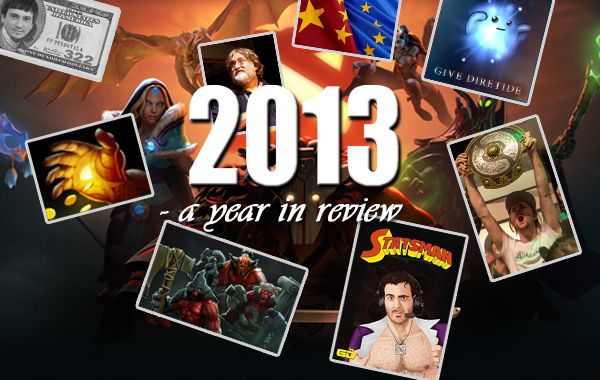Greetings, GosuReaders. 12 months have passed since our last retrospective, and Dota 2 has changed in ways we would never have imagined before. To commemorate 2013, here's a list of 13 things that have changed in Dota, and how it has affected all of us, be it as gamers or as followers of professional gaming, and especially you guys!
1. Official Launch of Dota 2
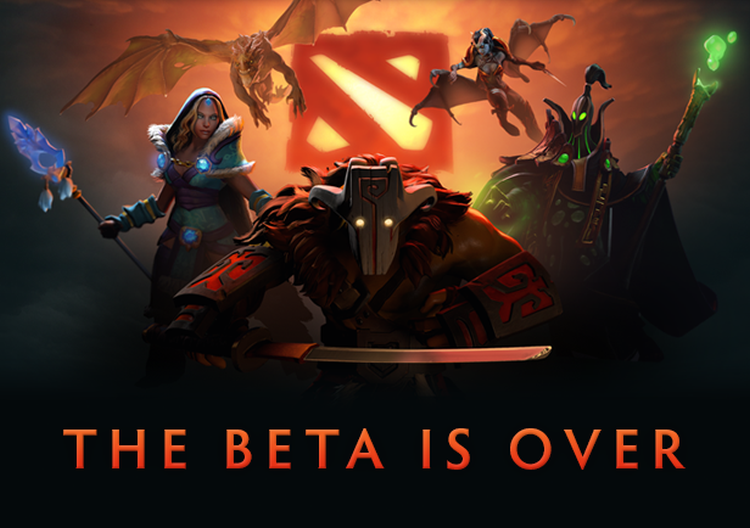
Photo by Valve.
Dota 2 was officially launched this year, on 9 July 2013. Pretty surprising, given that the beta lasted for close to three years, and there were close to 6 million unique users playing Dota monthly by then. The launch of Dota 2 globally coincided with the launches of Dota 2 in China and Korea, each respectively handled by Perfect World and Nexon. The public launch has allowed Dota to reach new heights in terms of unique players: in November the 700,000 concurrent player record was breached. This is phenomenal growth, compared to the same time a year ago when Dota 2 had just broken 100,000 concurrent players.
While the burgeoning numbers pose some problems for the servers, it is up to Valve to maintain them to ensure that we have our 24/7 desired uptime. At the same time, the explosion in the player base also means an attendant surge in viewership numbers. TI3 and the post-TI3 era has been generating record numbers in terms of viewership. The 'El Clasico' of contemporary Dota 2: the highly anticipated matchups between Na`VI and Alliance draw huge numbers every game, while the increase in number of Chinese tournaments is sure to generate even greater hype in the world's most populated nation.
Furthermore, now that Dota is officially launched, there will be an influx of sponsors and other interested parties getting involved in the Dota 2 scene. A prime example of this is Major League Gaming, that stepped in to launch their first ever Dota 2 competition after the game was officially released, as company policy dictated that they could not pick up games that were still in beta.
2. The International 2013
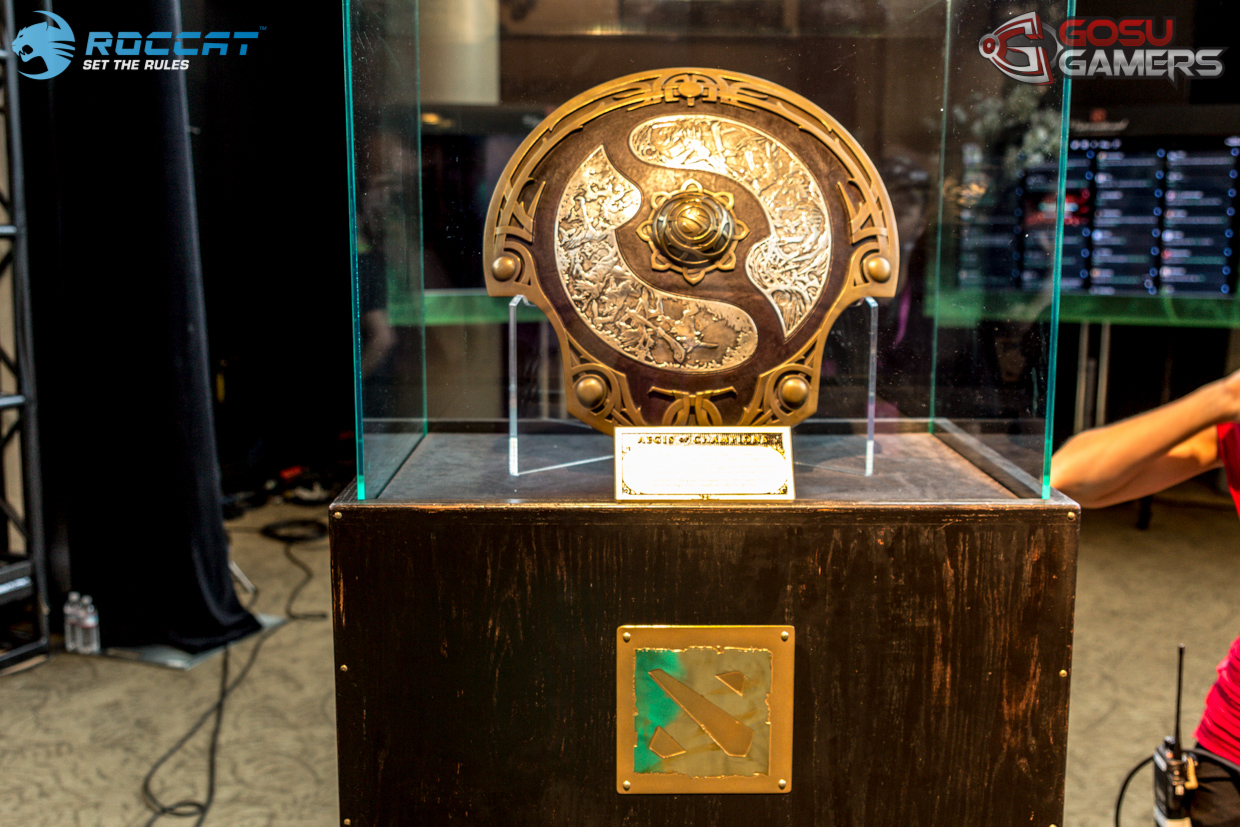
Banner by Valve.?
The International 2013 was a new milestone of firsts in Dota 2. It was the first Dota 2 tournament which was partially crowdfunded through the Compendium, it reached new records of viewership during the nail-biting finals between Na`Vi and Alliance, and most importantly, the total prize pool of US$2,874,380 is the largest prizepool ever in eSports history.
This increased prize pool has translated into an increase in tournament prizepools in general: US$50,000 is now no longer a staggering amount, instead it appears to be the norm recently, with Dota 2 League, DreamLeague, Dota 2 Champions League and other big tournaments promising such prize pools. Another notable change has been the increase in tournaments that are crowdfunded, with MLG Columbus and StarLadder Season VIII picking up compendium funding to increase player rewards.
3. The Battle for Supremacy Between East and West Continues
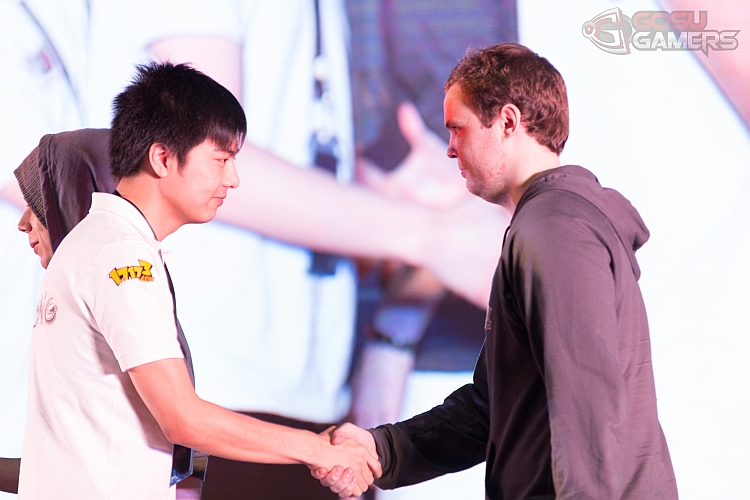
2013 saw the first mixed tournaments outside of The International where teams from both the East and West were present. The Alliance and Na`Vi were invited to the G-1 League Season 5 and Alienware Cup in China respectively, serving as precursors to the eventual East vs West competition at TI3. The first place finishes by both Alliance and Na`Vi seemed to herald a new era of Western dominance, which continued into TI3.
The conclusion of TI3 seemed to indicate that the West had convincingly replaced the East at the top of the Dota 2 pecking order. Indeed, Na`Vi and Alliance's extremely strong finish at TI3 and the failure of a Chinese team to breach the top three positions suggests that the mighty have fallen.
It is not surprising then that much blame was heaped on the ACE Alliance, the overseeing organisation for eSports in China. They were blamed for inflexible rules where teams were unable to participate in smaller competitions, so as to protect their advertising worth. There was also a lack of actual competition in China, in a scene that seemed extremely stagnant after March 2013.
ACE was criticized for not helping to develop the scene in China despite their role as overseers, and has risen to the challenge post-TI3. Despite the non-participation rule, multiple tournaments have sprung up in China: the 3 month long WPC-ACE League, the National E-Sports Tournament, SinaCup, and most recently, G-League. It is important to note that the WPC-ACE League has the largest prizepool outside of The International, a grand total of US$220,000.
ACE has also been forthcoming in changing schedules for the professional teams to ensure that DK was able to attend MLG Columbus, and to participate in the D2L and EMS qualifiers to attend western LAN tournaments.
At the same time, the west has been running its fair share of tournaments, with the conclusion of Starladder Season VII, WePlay.tv, MLG Columbus, DreamLeague and EMS One Fall in the past few months providing some memorable LAN finals. In particular, MLG Columbus and EMS One Fall saw the invitation of Eastern teams to the LAN finals, seeing DK, Vici Gaming and StarTale making the trips to Ohio and Tychy.
This cross-cultural learning will definitely see professional Dota 2 being pushed to new heights, especially with the seeming Chinese dominance at both these Western LAN events. We look forward to seeing the East versus West deathmatch at the D2L finals in Las Vegas.
Read more about what the ACE Alliance does here!
4. Transitioning into 6.79
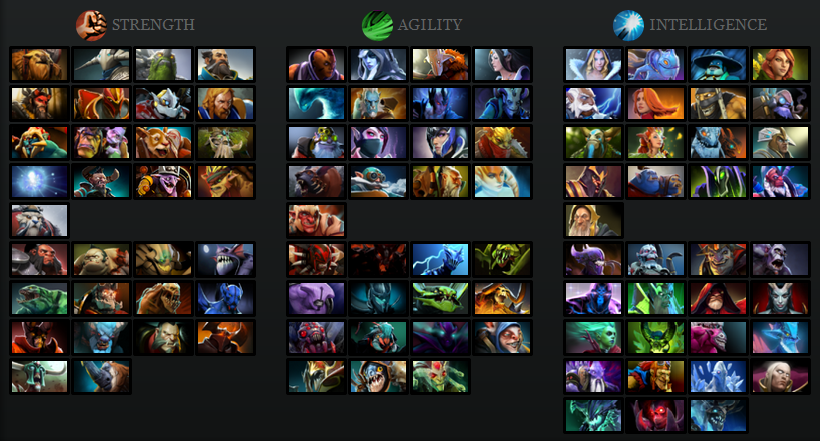
Another big change in 2013 was the introduction of a few major patches that saw the meta change, beginning with the release of 6.78 in May, prior to the International. We saw the rise of Visage, Outworld Devourer, Cancer Lancer, and Weaver, the heralded Wisp-CK global ganking combo, the Alchemist first-pick, and most interestingly, Spirit Breaker and Treant Protector each getting their moments in the limelight. In general, 6.78 encouraged defensive tri-laning and split pushing, best exemplified by Alliance's strategy that netted them only 3 map losses throughout the entire TI3. We affectionately term this Rat Doto now when teams choose to avoid fights and instead split-push their way to victory, a term first popularised by NS when Fnatic successfully split-pushed with a teleporting Meepo.
However, this has changed greatly in the past couple of months with the introduction of 6.79. Supports got a major buff: passive gold income increased, and tri-laning was neutered by a huge extent. 6.79 has heralded in a new meta where the typical laning layout 3-1-1 of 6.78 is effectively defunct, and the new fluidity has allowed for more team fights, early pushes, tempo controllers and creative laning combinations. We have seen Batrider losing his position as 100% ban/pick, as well as Wisp becoming a situational pick, and the rise of Midas Gaming.
How to Doto? Here's a few scenarios and how to react to them. pic.twitter.com/OwI7npoDsV
— Linus Staaf (@Tjernobylbarnet) December 10, 2013
Our very own Linus 'Tjernobylbarnet' Staaf's graphic on 6.79 and buying Hand of Midai.
One possible explanation for the influence of Midas could be laid down on the use of gold and experience graphs in the game. The introduction of such real-time statistical data has made the players more conscious about numbers and the advantage accrued by teams that can be directly measured via gold and experience. Midas allows a team to pad those numbers by providing a source of extra gold and experience, allowing teams to catch up or extend their advantages.
The rise of Midas gaming in the 6.79 era suggests that despite 6.79 encouraging lane dominance and good support rotation, the defensive mindset of 6.78 has not lapsed. Getting a hand of Midas delays your item progression by 1,900 gold, while taking 15 minutes to pay for itself, a movement away from the aggressive play and early pushes that originally characterised the 6.79 patch.
Or perhaps, as V1lat suggests, IceFrog decided to implement 6.79 to nerf DK who had looked unstoppable after its reformation, going 18-0 in the WPC-ACE League groupstages in 6.78.
IceFrog nerfed DK.. #wpc #6.79
— Vitalii Volochai (@v1lat) October 23, 2013
5. Cosmetics in Dota 2
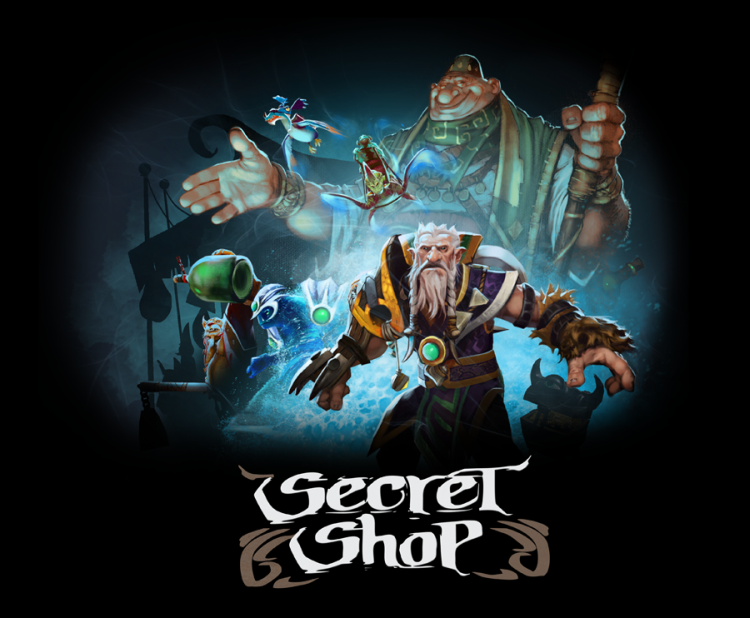
Photo by Valve.
Of course, with Dota 2 being a free-to-play game, there surely has to be some form of monetisation. The free to play announcement was made in 2012, but 2013 has seen a huge ramping up of the cosmetics market, with weekly updates with more and more sets pouring into the game.
The Three Spirits update caused quite a bit of economic upheaval by introducing crafting to the market. This bypasses the old model of a luck-based approach where deleting items gave you a random chance of acquiring an item of better quality: now all you have to do is acquire an augmentation recipe and plug in the required elements.
At the same time, there has been a large change on the 'strange' item watchlist, as Valve introduced the inscribed system, a new form of recording statistics on items. With all sorts of stats recordable, it is undeniable that Valve has created a brand new market for all the stat geeks in us to track how many kills we have acquired, how many 4-second Chaos Knight stuns we've clocked and so on.
The unusual market has also seen huge changes where the previously immutable tripartite of courier-effect-colour has now been torn asunder. Effects and colours are now interchangeable as long as you have the Ethereal or Prismatic gems to plug into an existing unusual courier. These gems are available by smashing (yes, smashing the poor couriers) with an Unusual Artificer's Hammer, which provides you with the Ethereal and Prismatic gems they originally had.
The change to unusual couriers severely devalued the rarest couriers of the past. The US$38,000 courier that made headlines on /r/Dota2 and on a Forbes blog lost roughly 85% of its value, and the buyer had some choice words for Valve after they changed the system.
For more on the Dota 2 economy, give Mervyn's lengthy but informative article a read!
6. ? ??_??? Give Diretide!
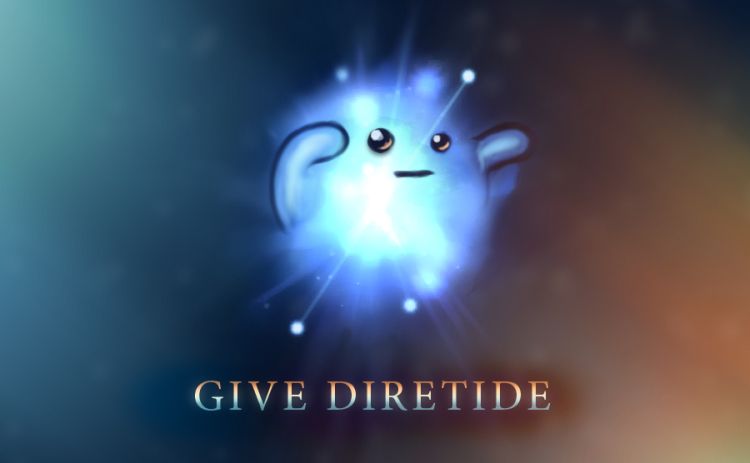
Photo by Steam.
We like to think of Dota 2 as a pretty enclosed community amongst people who play the game and the relative few who just watch professional matches. The last week of October 2013 will remain a week of infamy for us players who had to deal with the Give Diretide saga, perhaps the biggest incident to hit Dota 2 this year outside of the professional scene.
The saga emerged from the wild hype on many gaming communities, especially reddit, where many who were expecting the Diretide game mode decided to wreck havoc by punting this "? ??_???Give Diretide!" emote all over the internet, from /r/Volvo to Obama's FaceBook page.
If anything, this saga highlighted Valve's major flaw of not communicating with its audience, which it has valiantly tried to rectify in a series of blog posts and events since November: the Three Spirits update, followed by the ongoing Wraith King update. The ripple effect from this saga underscored the power of video games in mobilising a large group of individuals to participate actively across the internet, while also serving as a retrospectively humorous account of player immaturity.
A summary of the saga can be found in Julian 'hattfatt' Koch's article here!
7. The Demise of CIS and SEA Dota

Photo by GosuGamers.
After the conclusion of TI2, the CIS region seemed to be on edge with the explosion of talent into the scene, with RoX.KiS bursting onto the scene and Team Empire challenging Na`Vi with extreme vigour. Team Empire seemed to be the next CIS powerhouse, regularly taking series off Na`Vi with their roster of Artur 'Goblak' Kostenko, Airat 'Silent' Gaziev, Gleb 'Funn1k' Lipatnikov, Vladislav 'blowyourbrain' Morozyuk and Roman 'Scandal' Sadotenkov.
However, the ensuing CIS reshuffle, which saw the loss of of Funn1k to Na`Vi in March, as well as Goblak and Silent to DD.Dota in April, left Team Empire in shambles, and with no successor in the CIS region able to compete with Na`Vi.At the same time, other star-studded line ups like Virtus.Pro have failed to live up to expectations, being in no way able to break Na`Vi's dominance in the CIS region.
On the other hand, we have SEA Dota. South-east Asian Dota has produced the likes of many 'Eastern' superstars, such as Yee Fung 'Mushi' Chai, Hock Chuan 'Chuan' Wong, and Daryl 'iceiceice' Koh, as well as the aggressive and ingenuous meta characteristic of games in the region: a penchant for Tinker and Zenith's legendary No Ban strategy that took a game off the seemingly invincible Invictus Gaming in the post-TI2 era.
Yet, we have seen the demise of SEA Dota after TI3, where two of the three teams (Team Zenith and MUFC) that were invited disbanded. Orange, second runners up at TI3, lost their captain, drafter and solo mid Mushi to the Chinese reshuffle, and have not produced stellar results with any of the replacements they have procured under the new organisation Titan.
Furthermore, the SEA region is plagued by an inherent lack of development as there are no large organisations and few sponsorship opportunities in a region where gaming is seen to be decadent and not treated seriously. This is coupled with the lack of Tournaments in the region in the post-TI3 era: while all other regions are expanding rapidly, even the small scale tournaments in the SEA region such as Gosucup, Litany League and GEST have disappeared off the radar.
It is unsurprising, then, that much of the SEA talent has been brought overseas, mainly to China. Chuan was the first to be poached to play for Invictus Gaming, and the post-TI3 reshuffle has seen Mushi, iceiceice, Nicholas 'xFreedom' Lim, and Galvin 'meracle' Kang heading to China as members of professional Chinese teams.
Recently, however, the SEA scene has seen a revival with Titan making it to the G-League, and the successful conclusion of the RGN League as well as the year-long GMPGL. With the upcoming The Asia LAN tournament on 27 and 28 December, maybe there is some hope for the SEA scene yet.
6. Studios, Casting and Professionalism
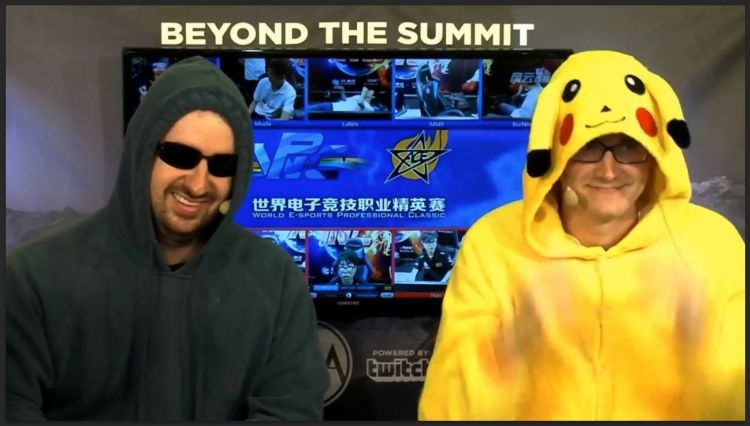
2013 has seen quite a large growth in the casting scene as well. For us followers of the eSports scene, nothing thrills us more than watching the studios casting the various tournaments globally, especially when they add #productionvalue to their casts. We have seen a huge growth in the professional casting scene as more and more numbers pour into the Dota 2 scene, increasing further interest in eSports and spectating professional tournaments.
The multiple studios have all been growing: joinDota has recently announcing TheCapitalist as the newest addition to their casting crew; BeyondTheSummit has been an avenue for many semi-pro casters to gain exposure on the scene with names like Basskip and LysanderXonora slowly coming into their own recently. Of course, the GD studio has not been slacking either, providing new levels of production value in the recently concluded DreamLeague, and their ambitious plans to work further with Sweden's TV6.
All these developments can only mean that we should look forward to better casting, better production and more to come in 2014.
9. Ranked Matchmaking
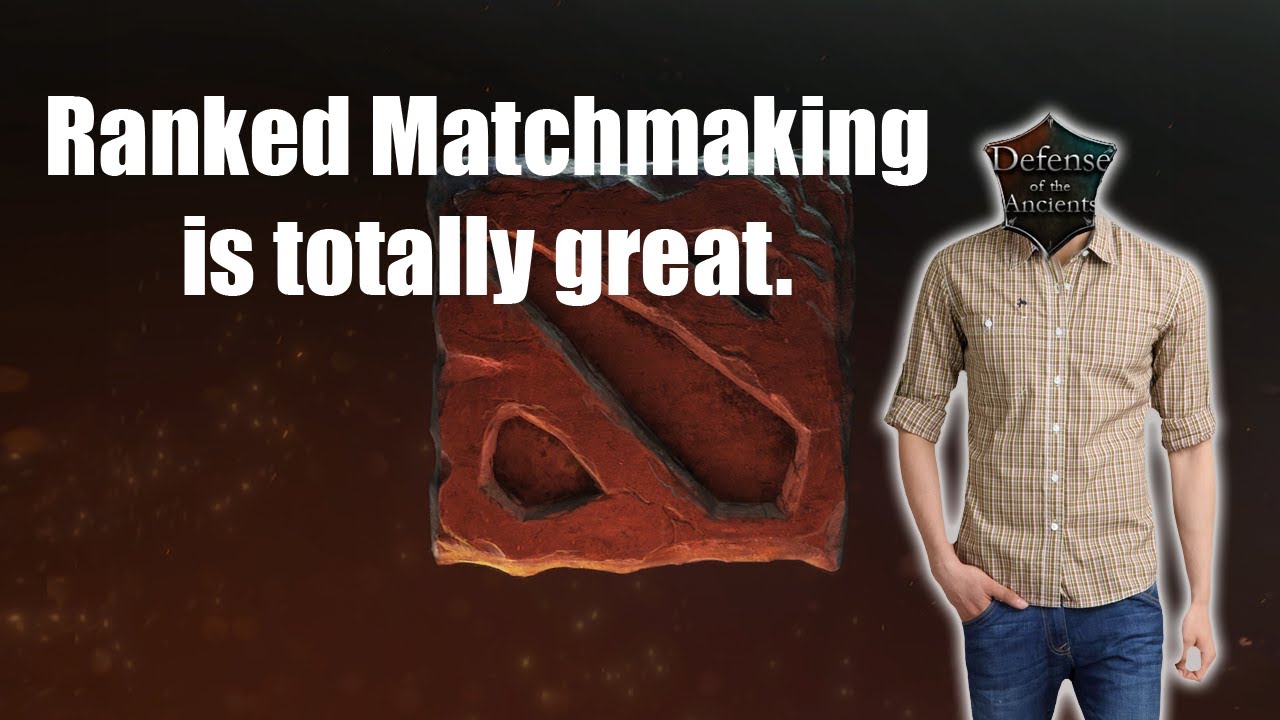
The Wraith Night update introduced ranked matchmaking to Dota 2, with a lengthy explanation by Valve on matchmaking mechanics on the Dota 2 Blog. As this new feature is in its immediate infancy, we will not speculate on its efficacy, as well as the issue of private matchmaking ratings and so on.
What we can be sure is that it will provide a more competitive scene for gamers, and allow for a split between casuals and competitive gamers alike. Ranked matchmaking will also serve to unearth newer talents in a professional scene that has not seen much new blood in recent times (refer to point 10) when we start seeing the rise of pubstars who are interesting in taking their game to the highest level.
However, it remains to be seen if public matchmaking will turn into a mode where trolling will become the norm (stay away, techies!) and playing in a try-hard style will result in angst from other players.
10. Young Blood Entering the Scene
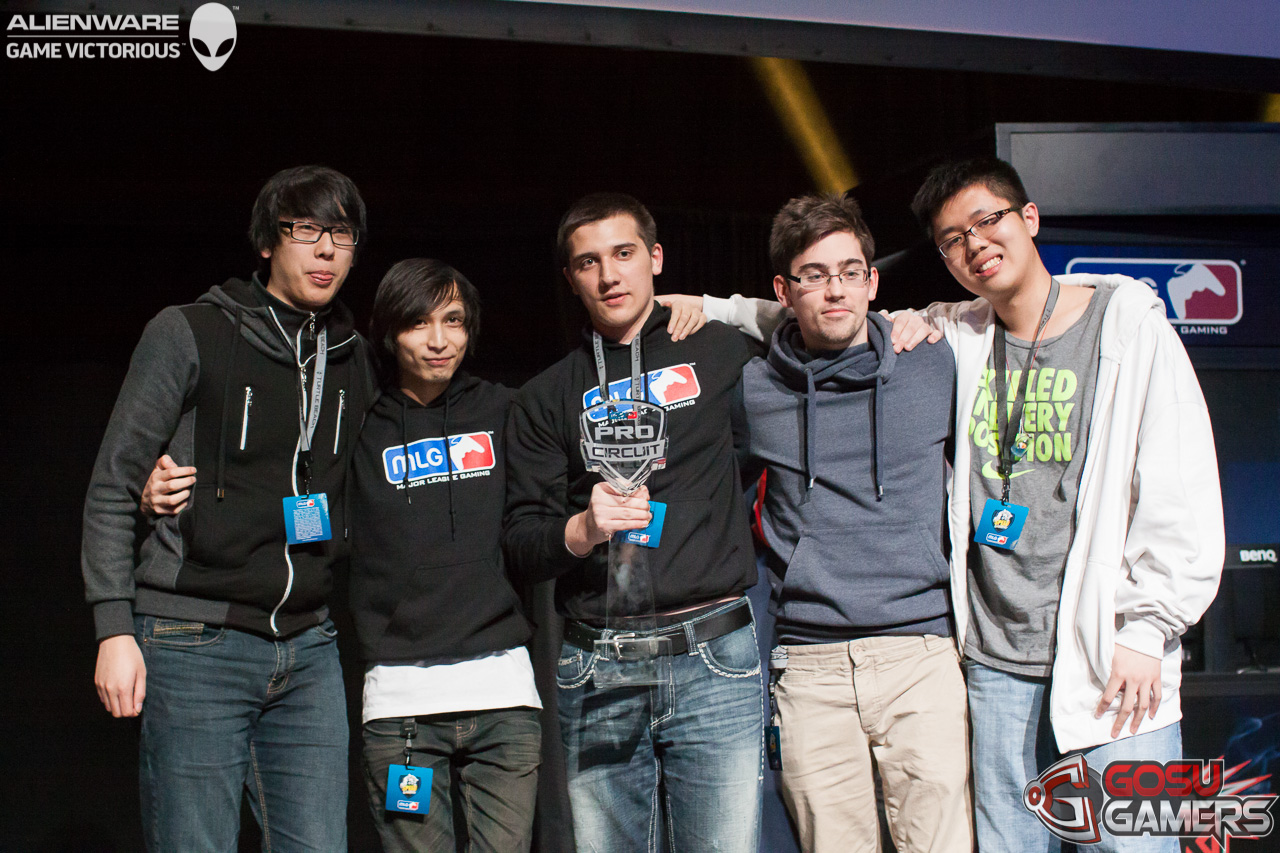
Photo by GosuGamers.?
Some of the brightest stars of 2013 have happened to be new talent emerging onto the professional scene through amateur competitions. The likes of Arteezy, CTY, EternalEnvy, Meracle and MSS are some of the most promising stars to the Dota 2 scene, and have gaining much traction in both Eastern and Western scenes.
However, the list of names are few and far between in such a diverse field. The growth of the scene has been hampered by the lack of amateur tournaments which are unprofitable as they do not attract enough viewers without the presence of big-name teams, or are overshadowed by the presence of professional teams in their midst (BigPoint Battle or Eizo Cup, for example).
More importantly, these young players have emerged through participation in the few amateur competitions, taking top prizes and drawing the limelight onto them. Many sport diverse picks (Meracle carry naga!) and amazing skills (Arteezy solo mid!) that surprise even the most seasoned of players, proving that their creativity is not anything to scoff at. Their youth and passion are huge drivers in their accomplishments and looks to propel them even further in the world of Dota 2.
We hope to see more amateur competitions in 2014 that will continue to unearth such hidden talent amongst the burgeoning Dota community.
11. Scandals and Controversies Galore
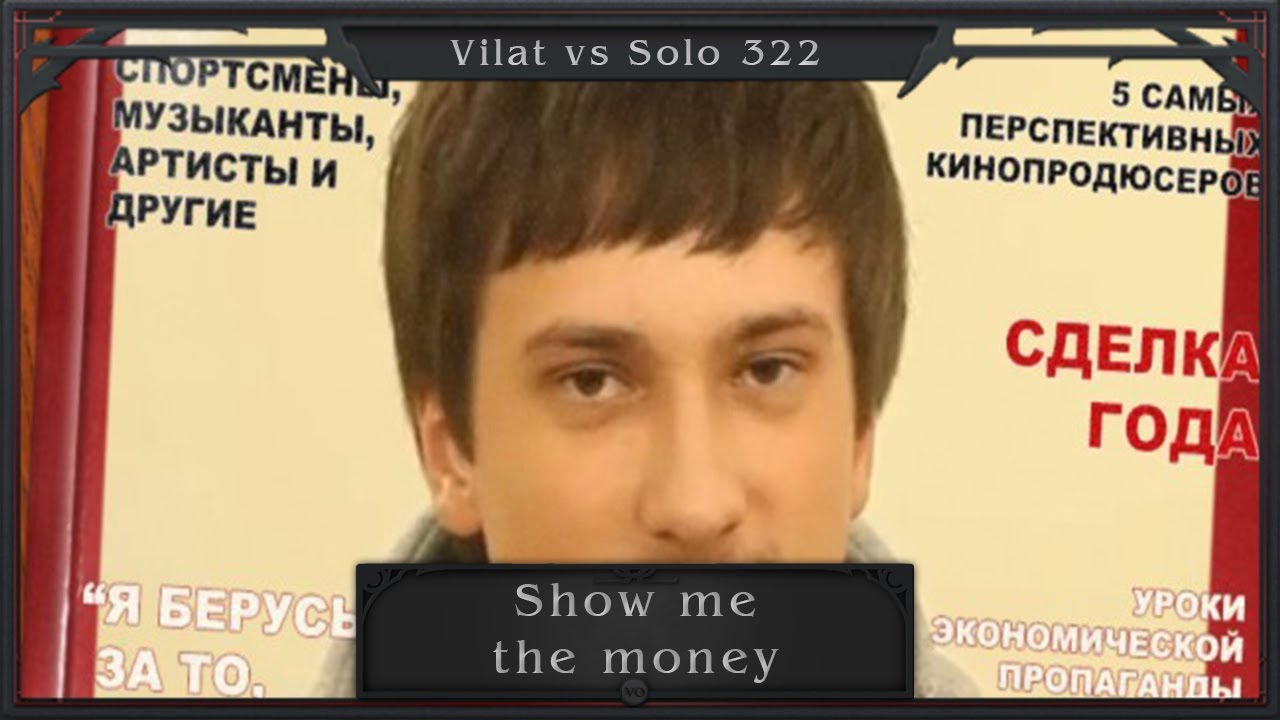
Of course, the growth of a community necessarily engenders the appearance of dramas and scandals in the scene. Most of these revolve around the professional scene where money is involved (Money is the root of all evil, kids!), and have been a constant source of entertainment for members of the community.
Some of the more notable ones include the Solo 322 betting scandal, where Alexey 'Solo' Berezin, a player from RoX.KiS, bet against his own team in a StarLadder match, netting himself $322 after throwing the match spectacularly with horrible picks. This of course got him banned from multiple tournaments, booted from his team, and left him with the legacy of being the subject of the 322 meme in Dota 2. Read more about this here and here.
As with all things Russian, another controversy erupted in November when the tournament organiser of The National, a Russian league, did not pay the winners of the tournament their prize money. Absconding with an estimated $7,620, Nikita Gerasimchuk caused quite a stir in the amateur Dota scene as it highlighted that there were still many shady characters out to make a quick buck out of the fast growing professional scene. Read more about this here.
At its core, money continued to plague other tournaments. Laurent 'Ange' Blum, CEO of The Premier League (TPL), was accused of cheating item creators of their rightful due. Thiago 't_vidotto' Vidotto lodged a complaint with Valve, resulting in them removing all TPL tickets from the store and revoking Ange's license to host any tournaments in the future. While we have learnt to never trust Ange again, the real tragedy here is that the beautiful Father of Dragons set for Dragon Knight is stuck in limbo as the legal rights of ownership are stuck with Ange. Read more here.
The scandal that takes the cake however, is one that blew the fish out of the water at MLG Columbus. It transpired that Marco 'Thyton' Fernandez, manager of Speed Gaming, was attempting to get them disqualified from tournaments they were slated to participate in because they were not listening to him. Furthermore, he had withheld their salaries and threatened them with disbandment if they failed to continue performing up to expectations.
It began with Marco first revealing their contracts to the public without the players' consent, followed by problems transpiring Korea when Speed travelled to participate in the Nexon Invitational Super Match. The problems were mostly kept in the dark until Marco decided to announce that Speed Gaming's sponsor had decided to disband the squad a mere hour before the MLG Columbus Grand Finals. The severity of this issue coupled with the timing suggested that Marco really did not have the players' interests at heart, further proven later when details of Weh Sing 'SingSing' Yuen's horrible trip to MLG was exposed to public scrutiny.
Following their victory over DK, what then followed was a flurry of public exchanges over the internet between members of the team, Rattlesnake, their Chinese sponsors, and Marco issuing statements on the Speed Gaming website and an interview on DotaRadio. It appeared that Marco had been lying to the players and putting undue pressure on them for results, while simultaneously conniving to mislead the Chinese investor with regard to the team. Furthermore, Marco decided to assume control of the Speed Gaming organisation, claiming to be the CEO rather than just the manager of the team. Read more about it here, here and here.
12. Female Gamers Making Themselves Heard

Photo by LGD.
We have also seen the emergence of a few female teams in Dota 2 recently, with the most prominent teams being the Na`Vi female team and LGD's female squad. Other teams like Team Chibiusa and PMS Asterisk * are also active participants in the scene today, with more appearing ever so often.
While these teams claim to be competitive, it is easy to cast doubts on their legitimacy within the competitive Dota 2 scene. Their competitions are hardly publicised, nor are they casted by any of the main studios. For example ongoing competitions like the Female SEA Dota 2 League remain obscured by all the other tournaments.
It is important to note how the female teams and leagues are exclusive to females, and there is hardly any recognised participation of female teams in the open tournaments or amateur cups organised by sponsors. This act of exclusivity divorces them from the overwhelmingly male player/fan base, which may also serve to reinforce the misogynistic stereotypes of women being unable to compete with males in video games. Furthermore, there are no in-game tickets for females-only tournaments, which is a great way to publicise tournaments and encourage support for these tournaments.
At the same time, it is also important to look at the representation of females in the community. It appears that most females in the Dota 2 scene tend to be subsumed into categories such as cosplayers, or as pretty faces to front the advertising/marketing aspects of their various organisations and sponsors. The allure of the girl gamer remains highly attractive, especially when coupled with the aggressive marketing at conventions and merchandise booths: check out Razer's CEO, Min-Liang Tan's Facebook page for regular posts of him posing with booth girls. Also of note is RaidCall's hilariously atrocious advertisement sexualising female gamers, which is sometimes played in between matches in the tournaments they sponsor.
Female underrepresentation in professional eSports is thus a major issue to consider given Dota 2's stellar growth. While much of the fault lies with a misogynistic community and player base, there are also a lack of major role models for aspiring female gamers. The only gamer of note to have joined a team and participated at a competitive level without sex exclusivity was Sayuri, but at the same time her acts have also left a lot to be desired.
In a field like eSports, we at GosuGamers hope to see the development of a more egalitarian playing field, as well as a greater acceptance of female gamers. Hopefully the day when a top team fields a professional female gamer in the top tournaments is not too far off.
You can find out more about female-only tournaments here!
13. Some interesting statistics
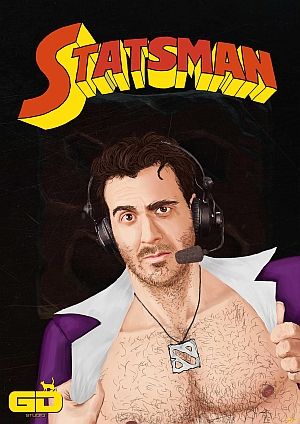 Highest prize pool in history: The International 3 ($2,874,381)
Highest prize pool in history: The International 3 ($2,874,381)
Highest prize pool outside TI3: WPC-ACE League ($228,000)
LAN events in West: 17
LAN events in East: 16
Disclaimer: Only players with 50 matches and above considered
Longest win streak: Na`Vi (24 wins)
Highest earning team: Alliance ($1,592,107)
Team with most matches: Fnatic (164)
Team with highest win-rate: Alliance (71.9%)
Team with most event wins: Alliance and Na`Vi (12)
Team with highest cash finish in tournaments: Alliance (24)
Player with most matches: Trixi (163)
Player with highest win-rate: s4 (72.0%)
Player with highest average level: Julz (19.4)
Player with highest average last hits: Meracle (261.6)
Player with highest average denies: Dendi (22.0)
Player with highest GPM: Loda (566)
GGnet Dota 2 news written: 1563
Most hits: XBOCT calling his teammates "useless idiots" (link)
Biggest roster change according to hits: Na`Vi replaces Ars-Art with funn1k (link)
Biggest fail: Dota 2 still needs beta key to play (link)
Most controversial news: First Departure on the verge of losing sponsorship over religiously intolerant remarks (link)
GGnet Dota 2 features written: 205
Feature with highest hits: Heroes of The International 3 (link)
Most controversial article: Ange in hot soup over workshop items controversy (link)
Best opinion article: The Dota 2 trading economy - What makes it so cut-throat? (link)
Runner-up: Retirement - How will the players handle it? (link)
GGnet Coverage page with most hits: The International 3 (link)
GGnet Coverage page (outside TI3) with most hits: G-1 League 2013 (link)
Statsman photo by MagnusT.

